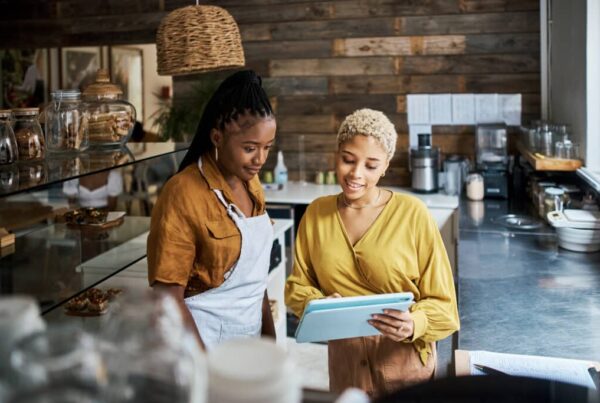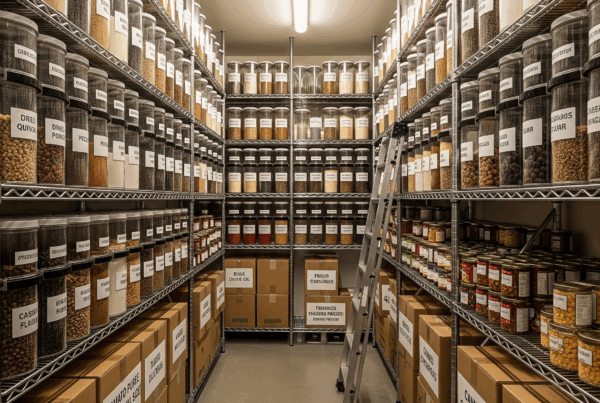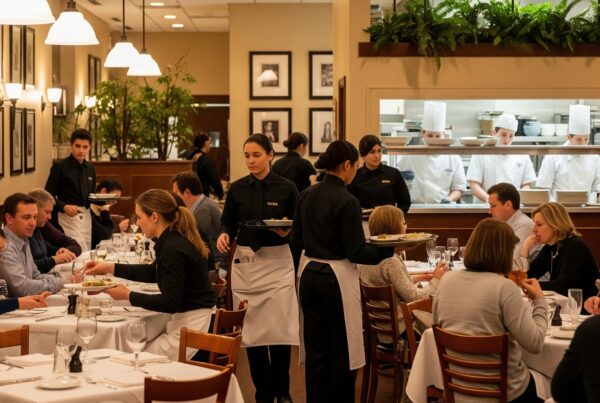Embarking on a restaurant design project is an exciting and sometimes overwhelming process. Whether you’re opening a new restaurant, renovating an existing one, or giving an old concept a fresh look, getting the design right is crucial for your business’s success. But before you start breaking ground, it’s essential to have a clear understanding of the process and expectations. One of the best ways to ensure that everything runs smoothly is to ask your restaurant designer the right questions. This will help you both align on vision, budget, and timeline, setting the stage for a successful partnership. In this post, we’ll explore seven key questions to ask your designer before starting any construction work.
What is the Design Process and Timeline?
One of the first things you’ll want to understand is how your designer works and what the overall timeline will look like. A great design doesn’t happen overnight—it’s a process that requires careful planning and attention to detail at each stage. Start by asking your designer to explain their workflow, from the initial consultation to the final build. This will give you an overview of what to expect and help you plan accordingly.
Typically, the process starts with understanding your vision and the concept of your restaurant. This is where you’ll discuss everything from the ambiance you want to create to the functional needs of your space. After this, the designer will begin creating initial sketches and floor plans based on those conversations. Once you’ve fine-tuned the concept, the designer will move on to more detailed work, including material selection, lighting design, and finalizing the layout. During this stage, the designer will also begin navigating the necessary permits and regulations, which can sometimes take time to process.
Depending on the complexity of the project, the timeline could range from a few weeks for a minor renovation to several months for a complete build. Make sure to ask about any potential delays or challenges that could affect the schedule. A clear understanding of the process upfront will help you avoid surprises and ensure the project stays on track.
How Do You Balance Aesthetics with Functionality?
Another important question to ask your designer is how they balance aesthetics with functionality. Designing a restaurant is not just about creating a beautiful space—it’s about creating a space that works well for both the customers and the staff. A great restaurant design should not only look inviting but should also facilitate smooth operations behind the scenes. A good designer will explain how they manage to create a visually appealing environment while keeping in mind practical considerations, such as kitchen flow, staff movement, and seating arrangements.
For instance, a restaurant’s layout needs to account for the kitchen’s efficiency. Your kitchen should allow chefs and staff to work seamlessly without bottlenecks, and the dining area should be spacious enough to avoid crowding while still feeling cozy and intimate. While some restaurants may prioritize bold, dramatic design elements, others may focus on creating a calm, welcoming atmosphere where guests can enjoy their meals without distractions. Ask your designer how they approach this balance and ensure they understand the specific operational needs of your restaurant.
How Will the Design Reflect My Brand Identity?
Your restaurant’s design should tell a story—your story. Whether you have a well-established brand or are just starting to develop one, the design of your space should reflect your values and the type of experience you want to provide to customers. A good designer will be able to take your brand identity and translate it into the physical space. This could involve incorporating design elements that resonate with your restaurant’s ethos, whether that’s through color choices, materials, lighting, or furnishings.
For example, if your brand is all about sustainability, the designer might recommend using reclaimed wood, eco-friendly materials, or energy-efficient lighting. On the other hand, if your concept is more modern or minimalist, the design might lean toward clean lines, neutral tones, and sleek finishes. Ask your designer how they plan to integrate your brand identity into the restaurant’s design. Their ability to connect your vision with the space will be one of the key factors in creating an unforgettable experience for your guests.
What Materials Do You Recommend for Durability and Maintenance?
Another critical aspect of restaurant design is choosing the right materials for the space. The materials you select need to be not only visually appealing but also durable enough to withstand the wear and tear of daily operations. Given that restaurants experience high traffic and constant use, durability and ease of maintenance should be top priorities when selecting flooring, furniture, countertops, and other elements. A good designer will help guide you through the process of choosing materials that balance aesthetics with practicality.
For example, certain materials like high-end wood might look beautiful but may not be suitable for high-moisture areas such as bathrooms or kitchens. Likewise, some types of flooring may scratch easily or require regular upkeep, which can add unnecessary costs over time. Ask your designer for recommendations on materials that are durable, easy to clean, and suited to your restaurant’s specific needs. You want your restaurant to look great now, but you also want it to maintain that fresh, polished look for years to come.
How Will the Layout Affect Customer Experience?
The layout of your restaurant plays a pivotal role in the customer experience. From the moment a guest walks through the door, their experience should feel seamless, comfortable, and engaging. The flow of the space should allow guests to move around easily while giving them an enjoyable and intimate dining experience. This is where the designer’s expertise in spatial planning comes into play.
The layout needs to account for several factors, including seating arrangements, sightlines, and noise levels. For example, you don’t want tables to be so close together that guests feel cramped or overhear every conversation. You also want to ensure that the flow of traffic for both customers and staff is efficient and intuitive. A great designer will understand these nuances and be able to design a layout that minimizes bottlenecks and maximizes comfort for guests and staff alike.
When you ask your designer about the layout, make sure to discuss how they plan to optimize the space for both functional needs and customer experience. Are the dining areas spaced comfortably? Are there any areas that might feel too cramped or noisy? A thoughtful layout can elevate the overall ambiance of your restaurant and encourage repeat visits.
What Are the Potential Challenges or Limitations?
Every restaurant design project comes with its own set of challenges, whether it’s dealing with zoning restrictions, working within an existing space with structural limitations, or staying within a tight budget. It’s essential to address these challenges early in the process so you can plan accordingly. When you ask your designer about potential challenges or limitations, you’ll gain a better understanding of what obstacles might arise and how they plan to address them.
For example, there may be local building codes or regulations that affect your design, especially if you’re working with a historic building or in a location with strict zoning laws. Structural limitations could also affect the way certain design elements are implemented, such as creating open spaces or adding windows. A good designer will be transparent about these potential hurdles and work with you to find creative solutions. Being prepared for these challenges from the start can save you time, money, and stress down the road.
What Is the Total Budget, and How Do You Manage Costs?
Finally, one of the most important questions to ask your designer is about the budget. Designing and building a restaurant can be an expensive endeavor, so it’s crucial to have a clear understanding of costs from the outset. Ask your designer for a breakdown of the expected expenses, including design fees, materials, labor, permits, and any unforeseen costs that might arise. Having a comprehensive understanding of the budget will help you avoid surprises and ensure that you’re able to make informed decisions about what to prioritize.
A transparent conversation about the budget will also help you set realistic expectations. Your designer should provide a clear understanding of what’s included in the budget and how they plan to manage costs throughout the project. If changes need to be made along the way, your designer should be able to suggest cost-effective alternatives that still align with your overall vision. Discussing potential contingencies for unexpected expenses will also ensure you’re prepared for any surprises that might come up during the construction process.
Ask the Right Questions
Asking the right questions early on can set the stage for a successful restaurant design project. By taking the time to understand your designer’s process, expectations, and the challenges ahead, you can make more informed decisions and ensure that the final result is exactly what you envision. Clear communication and trust between you and your designer are key to creating a space that not only looks beautiful but works efficiently and effectively for both staff and customers.
Remember, designing a restaurant is more than just picking out colors and finishes—it’s about creating an experience that will resonate with your guests long after they leave. By asking these essential questions and maintaining an open dialogue throughout the process, you’ll be well on your way to building a restaurant that’s a true reflection of your brand and vision.



